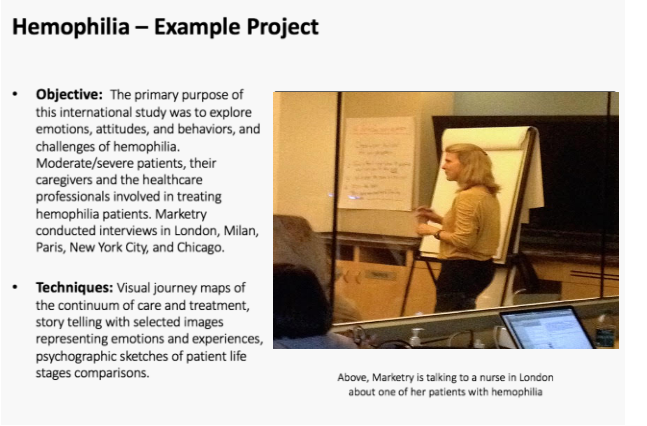Treating the Whole Person: Qualitative Research with Patients with Rare Diseases
Posted on March 1, 2019
From the perspective of “patient-centered” healthcare, exploring patients’ preconceptions, treatment experiences, quality of life, satisfaction, and illness understandings are all critical components in improving primary healthcare. Using qualitative research to discover patients’ experiences allows us to better understand the whole person, not just the patient.
A disease or disorder is defined as rare when it affects fewer than 250,000 in the EU, and fewer than 200,000 in the US (in the U.S. — approximately 10 percent of the total population, and in the EU — approximately 6 to 8 percent of total population). The most important characteristics of rare diseases and disorders include:
- There are over 6000 rare diseases characterized by a broad diversity of disorders and symptoms that vary not only from disease to disease but also from patient to patient.
- 80% of rare diseases have identified genetic origins.
- 50% of rare diseases affect children.
- Relatively common symptoms can hide underlying rare diseases leading to misdiagnosis and delaying treatment.
- Often disabling, the patients’ quality of life is affected by the lack or loss of autonomy due to the chronic, progressive, degenerative, and frequently life-threatening aspects of the disease.
- The fact that there are often no existing effective cures adds to the high level of pain and suffering endured by patients and their families.
While “typical” healthcare research is rarely routine, qualitative research with patients with rare diseases brings its own, unique set of challenges.
Challenge #1: Difficult Recruitment. Recruiting is much more difficult and time consuming since incidence rates for rare diseases and disorders are very low. For example (see our case study below) there are only 20,000 adults in the US with hemophilia – a genetic bleeding disorder that prevents the blood from clotting normally – and only about 400,000 worldwide.
“We sponsor patient events, like walks and conferences, and meet the patients and their families and explain what we do. Most want to join, and we email them a gift card to join. Once they are comfortable – maybe after they’ve done a study, enjoyed it, realize they aren’t getting any marketing calls – they spread the word to their support groups, family members, closed Facebook pages, etc.” – Wes Michael, President & Founder, Rare Patient Voice, LLC
In order to properly recruit for a qualitative project with patients with rare disease, it is important to:
-
- Allow for more time: give yourself 3-4 weeks to recruit instead of the typical two
- Partner with specialists: recruiters such as Rare Patient Voice have the experience to help
- Attend patient-oriented events and support groups
- Ask patients for referrals
- Partner with advocacy groups, and do your own digging online: utilize Facebook groups, blogs and forums where the patients gather.
Challenge #2: Low Completion Rates. Participant rates of completion are sometimes lower for many understandable reasons, including reduced mobility due to pain. For example, patients with hemophilia suffer with internal bleeding, which commonly occurs in the spaces around joints, frequently results in pain and swelling.
- In order to improve completion rates in a qualitative project with patients with rare disease, it is important to:
- Make it easy for them: choose the right methodologies to meet them where they are comfortable and have the ability to respond (online, in home, etc.). Choose exercises that are fun and easy to complete.
- Be more proactive in recruiting: involve more follow-ups and check-ins from both the recruiter and moderator throughout the study including personal phone calls when necessary.
- Involve a caregiver: recruit both the patient and one of their primary caregivers to participate.
- Involve their families: talk to family members and keep them involved throughout the study.
Challenge #3: Sharing on sensitive topics. One can imagine that the approach to an interview with a patient suffering from a rare disease needs to differ from an interview about purchasing brands of chewing gum.
- The best way to open up participants? Creating a safe environment. A skilled qualitative interviewer will be able to:
- Build rapport: the way in which sensitive topics are introduced is critically important. Build rapport by actively listening, not judging, being sensitive, observing and understanding non-verbal cues, being truly interested in what people have to say, and appreciating them as people.
- Slow down the conversation: use periods of silence and pregnant pauses to allow the patient to gather their thoughts, control their emotions and find the vocabulary to synthesize their experience. The interviewer will also need these pauses to control their own emotions; you will hear graphic, moving and disturbing stories.
- Expand their qualitative toolkit: interventions or projective techniques have to be chosen with care – they need to be creative but easy to complete.
When conducting research with patients with rare diseases, a seasoned moderator can rise to the challenge and get the key insights. Finding that moderator, however, can be it’s own challenge. “When the topic is difficult or sensitive, a new set of standards and boundaries come into play and a wise moderator knows if they are up to task when the bar is raised.” (Naomi Henderson)

Learn more about how Marketry can help with your qualitative research needs on sensitive topics.

